Advance CTE’s “Research Round-Up” blog series features summaries of relevant research reports and studies to elevate evidence-backed Career Technical Educational (CTE) policies and practices and topics related to college and career readiness. This month’s blog elevates state examples of how federal funding might be used to administer youth apprenticeship. These findings align with Advance CTE’s vision for the future of CTE where each learner’s skills are counted, valued, and portable.
 Overview
Overview
In celebration of Apprenticeship Month, we’re elevating two reports from New America that provide state CTE leaders with helpful information about opportunities to leverage (or braid) funding to support youth apprenticeship or registered apprenticeship (RA) programs.
Background
Earlier this spring, New America published a blog, “Leveraging Existing Federal Funding Streams for Youth Apprenticeship,” in response to memos from the Office of Career, Technical and Adult Education (OCTAE), the U.S. Department of Education (DoE) and the U.S. Department of Labor (DoL) outlining how the Workforce Innovation and Opportunity Act (WIOA) and the Carl D. Perkins Career and Technical Education Act (Perkins V) can be applied in more flexible and innovative ways to support youth apprenticeship. New America then published a research study in early November on the challenges and opportunities facing community colleges that want to expand apprenticeship opportunities to their students. This report, “Community Colleges and Apprenticeship: The Promise, the Challenge” expands on key blog recommendations; notably, that state CTE leaders should consider using federal funds to partner with an experienced intermediary organization to build out RA programs statewide.
Apprenticeship Intermediaries
An apprenticeship intermediary is similar to “workforce intermediaries” in the public workforce system, which has a long history of facilitating connections between public and private services and workers. Unlike Registered Apprenticeship, which is well defined and regulated by the DOL, there is no definition of an “apprenticeship intermediary” in federal statute. In their study, New America utilizes the definition coined by the federal government, “An apprenticeship intermediary helps to build, launch, and run apprenticeship programs in collaboration with other apprenticeship partners. Just as many organizations may participate in apprenticeship partnerships—including employers, and often also labor organizations, secondary and postsecondary institutions, community-based organizations (CBOs), and industry organizations or associations—an equally wide array of organizations may perform intermediary functions.”
Intermediaries typically support program development and delivery; stakeholder engagement; monitoring, evaluation, and support services; and strategy and field building. These responsibilities make community colleges a strong contender to serve in this role as many of these services are already built into the institution.

Findings
This study found that community colleges are uniquely positioned to support the expansion of apprentices by acting as apprenticeship intermediaries”
- Community colleges successfully balance the needs of employers and apprentices because of their overlapping missions in training, workforce, and economic development as well as their experience serving diverse students.
- Nontraditional apprenticeships—like nursing and cybersecurity—can warrant a more active community college intermediary role because the occupations require academic credentials to get and keep a job.
- Community colleges acting as intermediaries can reduce the financial burden on students who want to train by tapping into a range of public funding options.
Recommendations
State and system policy plays a key role in supporting community colleges as apprenticeship intermediaries. State CTE leaders seeking to leverage community colleges to expand apprenticeship participation can:
- Create a last-dollar scholarship or tuition waiver policy.
- Integrate apprenticeship models into the funding formula.
- Adjust licensure requirements to remove prohibitive cost barriers.
- Brokering partnerships with universities to apply for DOL grants.
For further reading
Leveraging Existing Federal Funding Streams for Youth Apprenticeship also addresses the use of federal funds for teacher preparation programs.
Please visit Advance CTE’s Learning that Works Resource Center for additional resources about the benefits of expanding apprenticeships and strategies for leveraging community college partnerships.
- Supporting Community College Delivery of Apprenticeships
- State Funding Models to Support Youth Apprenticeships
- State Policy Playbook to Advance Youth Apprenticeship
Amy Hodge, Membership and Policy Associate


 That leaves remaining challenges around data capacity. Even as youth apprenticeship programs increase their enrollment, the existing apprenticeship data infrastructure is insufficient to monitor and support these emerging programs. State and federally administered Registered Apprenticeship programs can submit data through the Registered Apprenticeship Partners Information Database System (RAPIDS), but this system cannot yet differentiate between traditional and youth apprenticeship programs.
That leaves remaining challenges around data capacity. Even as youth apprenticeship programs increase their enrollment, the existing apprenticeship data infrastructure is insufficient to monitor and support these emerging programs. State and federally administered Registered Apprenticeship programs can submit data through the Registered Apprenticeship Partners Information Database System (RAPIDS), but this system cannot yet differentiate between traditional and youth apprenticeship programs.  This is the third blog in a series published in partnership with New America through the
This is the third blog in a series published in partnership with New America through the  Developed with input from nearly 200 national, state and local education and workforce development leaders and supported by 40 national organizations,
Developed with input from nearly 200 national, state and local education and workforce development leaders and supported by 40 national organizations, 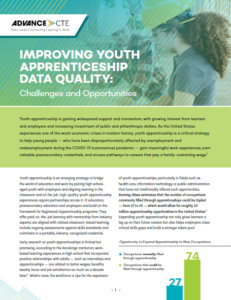 Apprenticeship in the United States is an under-utilized but promising education and employment strategy — particularly for youth whose connections to college and paid work are even more tenuous due to the COVID-19 economic crisis. In 2018, New America launched the Partnership to Advance Youth Apprenticeship (PAYA), a national network of partners (including Advance CTE), states, local intermediaries and philanthropies to define and scale up high-quality youth apprenticeships nationwide. In just a couple short years, the network has made incredible progress, sowing the seeds for future programs.
Apprenticeship in the United States is an under-utilized but promising education and employment strategy — particularly for youth whose connections to college and paid work are even more tenuous due to the COVID-19 economic crisis. In 2018, New America launched the Partnership to Advance Youth Apprenticeship (PAYA), a national network of partners (including Advance CTE), states, local intermediaries and philanthropies to define and scale up high-quality youth apprenticeships nationwide. In just a couple short years, the network has made incredible progress, sowing the seeds for future programs.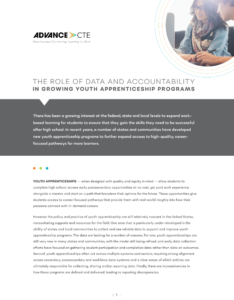 Youth apprenticeship programs can give students access to valuable work-based learning experiences that provide insights into how their interest can connect to education and the workforce. Although these programs are often beneficial for participants, there is little data to show the programmatic landscape and impact. A lack of data inhibits the development and expansion of youth apprenticeship programs.
Youth apprenticeship programs can give students access to valuable work-based learning experiences that provide insights into how their interest can connect to education and the workforce. Although these programs are often beneficial for participants, there is little data to show the programmatic landscape and impact. A lack of data inhibits the development and expansion of youth apprenticeship programs. 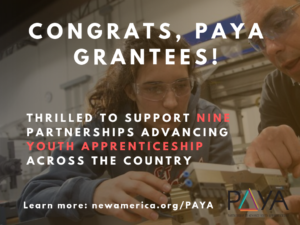 The Partnership to Advance Youth Apprenticeship (PAYA), a multi-stakeholder initiative, just announced its nine grantees under the first joint philanthropic investment to expand youth apprenticeship in the United States. These grantees – selected from an extremely competitive pool of over 220 applicants from 49 states and Puerto Rico – will launch and expand high-quality youth apprenticeship programs in multiple cities, regions, and states, and in a range of industries. The grantee recipients are:
The Partnership to Advance Youth Apprenticeship (PAYA), a multi-stakeholder initiative, just announced its nine grantees under the first joint philanthropic investment to expand youth apprenticeship in the United States. These grantees – selected from an extremely competitive pool of over 220 applicants from 49 states and Puerto Rico – will launch and expand high-quality youth apprenticeship programs in multiple cities, regions, and states, and in a range of industries. The grantee recipients are: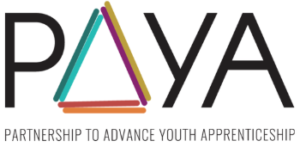 Earlier this month, the
Earlier this month, the  Attendees had the opportunity to tour the meeting location’s, Trident Technical College, culinary, nursing and industrial mechanics lab spaces where youth apprentices’ technical coursework is held. Each space was designed to provide students with the best and most realistic learning experience. For example, the nursing lab space includes replicas of hospital rooms, so that students can gain hands-on experiences in a setting that mirrors the workplace.The lab experience includes high fidelity mannequins that can mock different scenarios that a participant can expect to encounter in a patient. The mannequins are able to make noise, change color and even produce fluids. Students are able to apply the knowledge and skills they learn on the mannequins, setting them up for success in the workplace.
Attendees had the opportunity to tour the meeting location’s, Trident Technical College, culinary, nursing and industrial mechanics lab spaces where youth apprentices’ technical coursework is held. Each space was designed to provide students with the best and most realistic learning experience. For example, the nursing lab space includes replicas of hospital rooms, so that students can gain hands-on experiences in a setting that mirrors the workplace.The lab experience includes high fidelity mannequins that can mock different scenarios that a participant can expect to encounter in a patient. The mannequins are able to make noise, change color and even produce fluids. Students are able to apply the knowledge and skills they learn on the mannequins, setting them up for success in the workplace. 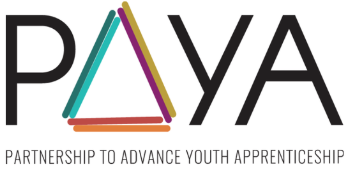 By integrating classroom instruction and hands-on learning, both
By integrating classroom instruction and hands-on learning, both